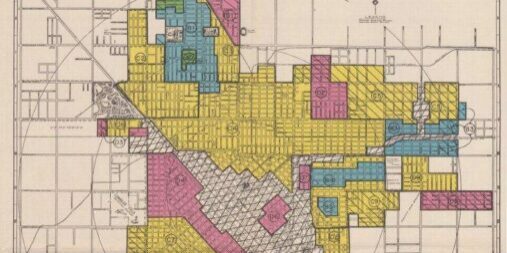At Spaceship Media we go right to the heart of conflicts, as journalists always have. Once there, we use the tools of our craft to support meaningful, respectful, fact-based conversations about the social and political issues that divide us. By convening conversations between communities that are not talking (or not talking productively) and supporting those conversations with moderation and reporting, we work to build what we think of as a triangle of trust between divided communities and journalism organizations that serve them. Here are the steps of Dialogue Journalism:
1. The Build

Dialogue Journalism relies, from start to finish, on a deep, collaborative relationship with our partner news organizations. In this first step of Dialogue Journalism we work to think through what conversation will have the most value for the communities we would like to engage. Together, we take a look at the news and political landscape in which our partners are operating, where the charged conflicts or divisions lie, and what fault line/s it makes the most sense to organize around. We ask a lot of questions:
- What are the political and social issues dividing people in your communities?
- What groups or communities are at odds or not talking?
- What question should we frame a discussion around?
- How long should the conversation go on?
- Where should the conversation take place?
- What platform/s will we use for this conversation?
- How many people will it include, ideally?
- How will the reporters gather and discover stories, and how will they work with moderators?
- How and when will we release content from the project?
Together we build a road map for how our work together will unfold. That said, flexibility and responsiveness is fundamental to our work. If we discover what we are doing isn’t working, we shift.
2. The Gather

The Gather begins with a a call out or invitation to community members through our media partners, website or social channels. A call out is typically worded something like this: are you interested in and open to a respectful conversation with people on the opposite side of issue X?
The call out links potential participants to an intake form that allows us to collect information about potential participants, including why they want to be a part of the conversation, what their views and thoughts are about the issues at hand, and basic demographic information.
In nearly all our projects, we ask some version of our four basic guiding questions:
- What do you think of people on the other side?
- What do you think they think about you?
- What do you want to know about them?
- What do you want them to know about you?
We may also ask project-specific questions. Additional questions might include:
- We may also ask project-specific questions. Additional questions might include:
- Why do you want to be a part of this conversation?
- What are you worried most about right now in your community?
- What are the biggest challenges your family faces?
- What in your personal experience informs your views about issue X?
Very often, after the initial series of call outs we follow up with targeted recruiting through individual reporters or community organizations. We are committed to creating groups that represent the diversity of the communities we are serving — most importantly, it is crucial that both “sides,” and all views, are represented so that a healthy conversation can develop and no one feels outnumbered.
After we finish recruitment and build a balanced membership list for the group, we reach out to each potential participant by phone or video call to give them an opportunity to ask questions about the project. We have the chance to explain our goals and motivations, give them a sense of what to expect over the life of the project, and make sure they understand the rules for participating.
These one-on-one contacts are very important for preparing people to be open and enthusiastic participants in the conversation. They are also important for screening out those who are perhaps unprepared to be in this sort of this sort of community. Red flags include those who, in these initial interviews, are angry, skeptical, belligerent or inflammatory.
3. The Welcome

Once you have recruited participants, vetted them for participation, and explained the purpose and guidelines for the group, you are ready to welcome everyone in!
It is important to make sure that people receive the guidelines for participation through multiple means (initial interviews, email newsletter, and posted within the community itself). We always emphasize to participants that they are joining a conversation, not a debate, that the conversation is an opportunity to listen, learn and talk with those they might not typically connect with.
We welcome people into the community by introducing ourselves as journalists and moderators and by inviting them to introduce themselves. For instance, in projects that take place on Facebook, we ask for a picture and a brief introductory post about who they are, their lives and their views.
We also reflect back to them some of their answers to our introductory questions. This can be done through videos, graphics or both. This is where people start to understand, connect with and humanize one another.
Sometimes, if there are issues and questions that emerge through the introductory questions, we open with a few already-reported FactStacks, so that people can begin to have a shared set of facts to converse around. Other times, we wait until questions and topics begin to arise organically from the communities we serve.
Another guiding principle of Dialogue Journalism is giving people space to talk about a variety of subjects, from the serious to the mundane. We encourage open and wide-ranging discussion because our communities are about what the people in them want to discuss. There are no right topics and no mandates.
The last four steps of Dialogue Journalism — Experience, Carry, Nourish, Share — all happen concurrently. Each element is fundamental creating a successful project.
4. The Experience

The Experience reminds us that each project is, most importantly, about the communities we serve; that our work is about creating meaningful, valuable — sometimes even transformative — experiences for those on opposing sides of difficult issues.
There are a variety of ways to create spaces where people can talk and learn from one another. Ultimately, the more nuanced the discussions, the richer the content produced by our partner newsrooms will be.
5. The Carry

The Carry is our term for moderation. We use the term “carry” because we want to highlight that we are supporting people in having respectful dialogue across difference. Our approach calls for paying close attention to participants’ social and information needs so that they are comfortable talking about the issues that are important to them.
Listening first requires moderators to remain attuned to the dynamics of the conversation, listening for when individuals might need support to stand in the crowd — when they feel ganged up on or overwhelmed. The Spaceship approach relies on appealing to people’s better natures, trusting them to participate in respectful, thoughtful conversation. Moderators establish conversational norms through their facilitation.
We have approached rules to moderation in two primary ways. The first has been to let rules and guidelines emerge from the community. More often, we begin with a clearly articulated set of community guidelines and we discuss them in our one-on-one conversations with participants, and distribute them by email and within the community itself.
Basic guidelines often include no name calling, no memes or gifs (if conversations are online) and more nuanced suggestions: ask questions out of genuine curiosity rather than to trap an opponent, take a break for 20 minutes if you start to feel yourself get angry or heated.
Using a variety of intentional moderation strategies, our goal is always to help people remain part of the group — that said, if people are destructive, we believe they should be removed without fanfare: personal attacks; hostile insults; vulgarity, racist or sexist comments directed at another person, are all destructive.
Moderation is hard work. It requires stepping out of our own firmly held beliefs and views to listen carefully to the community. It also involves a firm and complete commitment to always taking the high road, to not taking comments or rebuffs personally, to being a leader in creating, holding and maintaining respectful conversation across difference.
6. The Nourish

Our job together is to build a good community conversation. We prompt discussion in many ways — posting articles, posing questions, sharing personal details, inviting others to post stories or questions, etc. We know from experience that supporting a mix of serious and light discussions, factual and opinion-based, personal and overtly political make for a successful conversation.
A key element of Dialogue Journalism is the use of FactStacks, information reported in direct response to questions and issues that arise from the conversations we convene. FactStacks give participants a shared set of facts on which to base a conversation. We report as transparently as we can, respond respectfully to the challenges and questions of our communities, and acknowledge error or bias should it arise.
One of our core motivations is to is restore trust in journalists and journalism. Transparency matters for this. Accordingly, we encourage questions about the reporting process, both into the group and out of it. We very often also make an effort to engage the communities about how and where they get their news, what media outlets they trust and why, and other issues related to news literacy.
7. The Share

In The Build, we start to think collaboratively about stories and content that will emerge from the group. Throughout the life of the project we continue to develop this content plan. FactStacks are one type of content that arises from our groups — they are shared within the group but can also be shared to the larger public. Reporters have very often built traditional narrative stories around FactStacks.
Stories also emerge about the conversation itself. What is it like? What was learned? How did it impact participants? What opportunities for connection arose in the group? What outcomes were there? Did people connect outside of the group? Did they join together to talk about a shared problem? There are many types of stories that emerge from our communities and we work in deep collaboration with our partners to help plan and craft these. Some publications issue regular dispatches, others produce a package at the end of the group. Participants have contributed by writing commentaries about the value and impact of their experiences. We are always eager to explore new ways of creating meaningful content from these communities.
Project Outlines
Want to see a real-world instance of putting the 7 steps into action? What follows is a step-by-step summary of 2 projects.
Crossing the Line

Read about the Fresno Bee's project to discuss how dialogue journalism could benefit Fresno. Read here.
Feeding the Future

MPR connected with Spaceship Media to devise a dialogue journalism project to address the rural-urban divide in Minnesota. Read here.